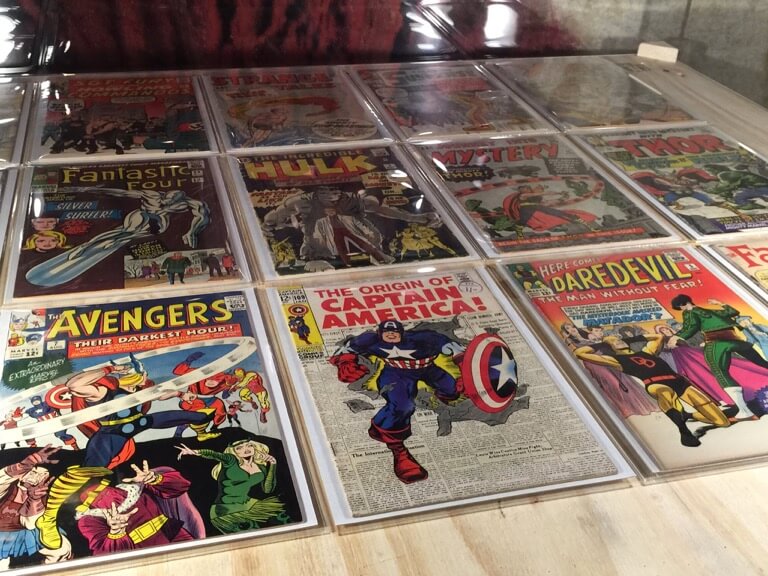Almost two years ago, in August of 2017, the filming of Avengers: Endgame began. Two years later, the film released on April 26, 2019 and achieved the highest opening weekend sales for a movie ever.
Even more amazing is that the film it beat for the number one spot was its own predecessor, Avengers: Infinity War. And — get this — Infinity War started filming at nearly the same time.
Two of the biggest movies ever, filmed within essentially the same two years, and then released one year apart.
The master class in creating a great video, nurturing excitement, and getting great results doesn’t end there. The Marvel Cinematic Universe (MCU) started way back in 2008, three years before HBO’s mega-hit show Game of Thrones released its first episode. Over a decade later and the MCU is as relevant as anything in popular culture.
So, how’d they do it?
Well, huge budgets certainly help, as do the best video production and editing skill on the planet, and a slew of the biggest names in Hollywood playing the superheroes. But budgets, gear, and star power don’t guarantee success.
The creators of the Marvel movies followed some key principles that any video creator can follow.
Much of what I discuss below can be found in even greater detail in two ebooks that we offer in the TechSmith Academy, our free resource on learning to create videos.
Here are some great tips you can learn from Marvel to get you started making better videos:
Know your audience

The creators of the MCU knew something critical—people don’t just love freakishly powerful, smart, and clever characters. Those are exciting things, but what really gets people invested in the stories in the MCU? What is it that pulls them back to the theater for every installment, parting with their hard earned cash to see these movies?
The MCU succeeded so thoroughly because they knew what their audience cared about. They figured out that it’s not simply the comic book heroes powers that people love, it’s their human qualities and challenges. The MCU was constructed on this foundational insight.
Study your target audience, whether it’s your customers, users of a product, or another common community of interest, and discover what they really care about. It’s often not just the process or outcome you’re explaining but helping them toward a greater goal.
If you can connect the content of your video to an audience’s core interest, you’ll succeed in doing what the MCU has done by weaving core themes into the stories told.
Create similar types of content or topics

This is both a way to make creating your content more efficient and keep your audience engaged.
The MCU is a rich world of interconnecting plot lines, character dramas, conflicts, and villains. Each movie stands as its own piece while managing to acknowledge (and often enhance) the others. Viewers follow this line and the consistency of the format brings them back. They know what to expect, the kind of experience they’re in for when they head to the movies, and they like it.
To do this with your videos, first, find what it is that you or company does best. This is likely a set of topics on which you can be considered an expert. The MCU creators are pros at translating comic book stories and heroes to the big screen. You are likely an expert in the problems that your company’s solution solves or the service it provides.
Once you know what topic(s) you’re expert in, go deep. Plumb the depths of them to discover all the details and minutiae that will help your audience. From this, you can derive a list of consistent topics for videos. Compiled together the list will represent a complete set of knowledge.
Also, consider your format. There are a few formats that perform especially well. Additionally, by choosing one to two formats to consistently use, it will be easier to create each video. Some of the most popular formats online include:
Create reusable pieces and create in bunches
I can’t speak to how many reusable pieces of content the MCU editors employed, but they sure did create in bunches. Over the last decade plus they have released 22 movies, or about two each year. This pace would force them to be creating different movies in parallel with one another.
The MCU hired different writers, directors, and other staff members for many of their movies. This let them work simultaneously. If you have a team, this is a good way to help with the creation of scripts and other materials for your videos. Of course, a team isn’t always an available resource. That just means reusable pieces will become even more important.
You can start by creating a script template. We use one for all our product tutorials, and it makes us much more efficient. A template provides a good starting point for each script and helps to focus the writer by giving them a few guidelines with which they can attack the dreaded “blank page.”
A good template typically contains prompts for key building blocks of any video including a title, a space for visuals or storyboard elements, and some information on the videos goals or main points.

Reusable content also helps in video editing. Not only will having intro and outro templates make the process go faster, but viewers will also appreciate the consistent look and feel.
Create your own intros, outros, lower thirds, and on-screen graphics, or use TechSmith Assets, which contains hundreds of thousands of video templates and resources that you can customize to your desired look and style.
Follow a consistent release cadence and interact

Marvel absolutely crushes this point by releasing at least two movies a year for the last decade plus. Any more than that and they risked oversaturating the market, while fewer might have let people move on to other sources of entertainment. The stories brought people in and left them desperate for each next installment. Then their consistent release cadence fed the demand.
You can do the same, albeit at a quicker pace and a bit smaller scale. Choose a logical pace for the amount of content you have and your viewers’ attention spans. Start with monthly or biweekly and see how your viewers engage. Whatever you decide on, make it public and stick to it.
On top of consistently releasing new content, you should also make a point to interact with your viewers. Respond to comments, ask questions, and encourage others to comment, like, and subscribe.
If you listen to podcasts or make YouTube videos, you are familiar with this practice.
Tell relatable, human stories

The MCU is flushed with great stories and it does a beautiful job of telling them. At the core of each of those stories are a number of timeless and deeply human themes. Friendship, success, tradition vs. change, sacrifice, responsibility and corruption, choices and consequences, finding oneself, and many more are all explored in the MCU stories.
The MCU takes these themes and uses them to motivate everything that their characters do. They don’t simply want to save the world, they want to return to a long lost love, see their family again, live up to the expectations of a parent. Beyond any special effects and cinematography, this is what keeps fans coming back.
I’m not saying your videos need to take on lofty themes and explore their most challenging questions. But remember that the best videos will contain an authentic story that viewers understand and experience themselves.
If you studied your audience well and are in touch with the problems they face or the reasons they purchase your product or service, then you can take that information and embed it in a story they understand.
We can all be (a little) like Marvel

The Marvel MCU is a feat of great video making at the grandest scale.
It takes hundreds of millions of dollars to create each movie. While that money helps them gain access to a global platform and audience, it’s not what keeps the fans demanding more.
That is achieved by the creators’ understanding of their audience, creation of similar and connected content, a consistent cadence of new content, and, finally, great storytelling that placed real, human experience at the center.
These are pillars of video creation we can all achieve.
Header Image Credit: “Exposition Jack Kirby Angoulême” by ActuaLitté is licensed under CC BY-SA 2.0





